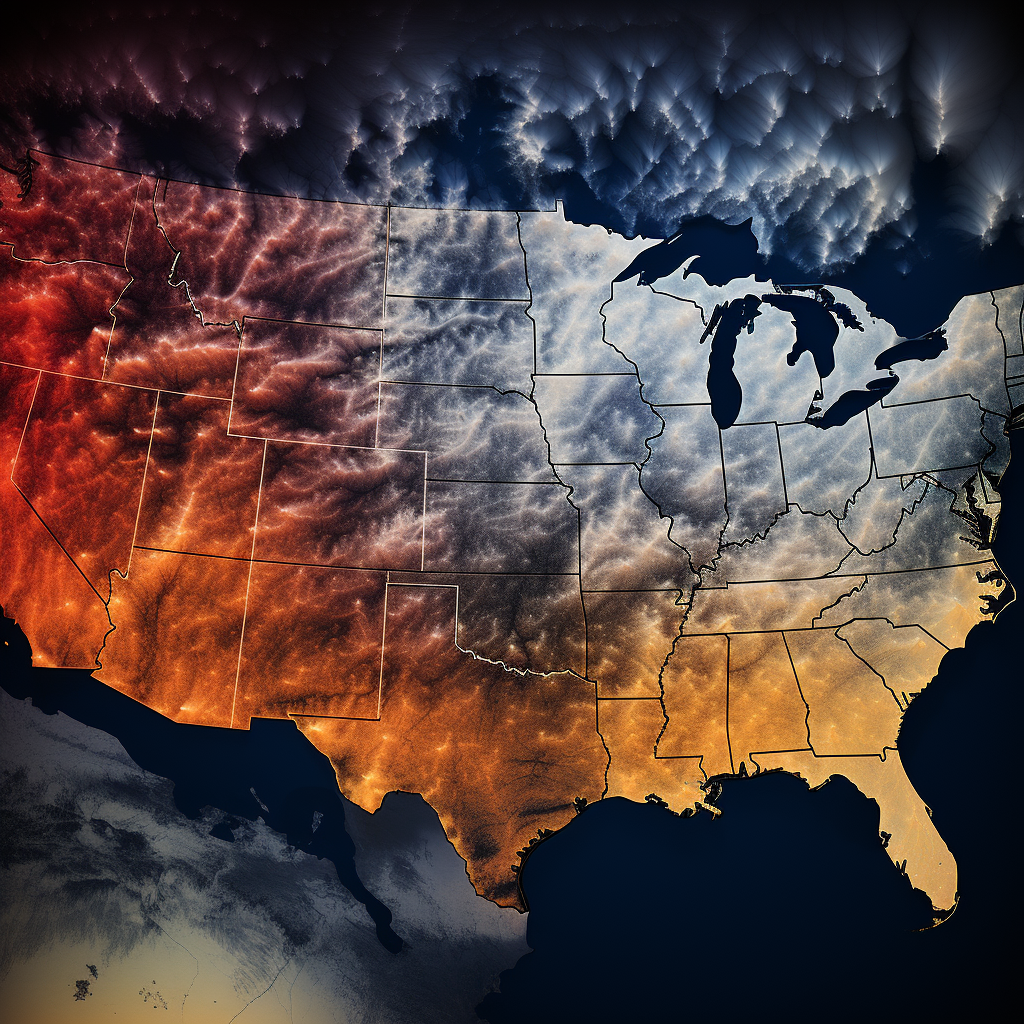October 26, 2023
Unraveling Diverse Weather Patterns Across the U.S.
Book a Demo
As the seasons change and weather patterns shift, the United States finds itself on the cusp of a myriad of climate conditions. The interior Northwest and northwest Great Plains are currently preparing for a bout of early winter weather. Winter Storm Warnings have been set in place and are expected to expand throughout the region, signaling a potential onset of colder weather.
Meanwhile, the southern region of the country is dealing with a contrasting situation. Southern Oklahoma and northern Texas, in particular, are in the midst of an extreme rainfall event. This has prompted the issuance of a Flood Watch warning, urging residents in these areas to keep a close eye on weather updates and prepare for potential flooding.
The Central U.S. and northwest Texas aren’t left out of the weather rollercoaster either. An unseasonably cold chill is predicted to descend upon these areas by the weekend, which may bring along wintry precipitation. Residents are encouraged to wrap up warm and prepare for potential icy conditions.
Contrasting this, the East is experiencing record warmth. Temperatures have been observed reaching the low 90’s in eastern Texas and are approaching 80 in the Mid-Atlantic region. Such high temperatures are uncommon for this time of the year.
With the U.S. gas population weight Heating Degree Day (HDD) forecast indicating that next week will be colder than usual, it seems that the cold weather is here to stay. This is the first time in four years that El Nino is in place, which may lead to warmer-than-average temperatures in the northern tier of the U.S.
The National Oceanic and Atmospheric Administration (NOAA) has also made several predictions regarding the coming weather patterns. These include wetter-than-average conditions for northern Alaska, the West, southern Plains, Southeast, Gulf Coast and lower mid-Atlantic. However, drier conditions are expected across the northern tier of the U.S., indicating a possible relief from the unusually warm temperatures.
In collaboration with the National Integrated Drought Information System (NIDIS), NOAA is monitoring extreme, ongoing drought conditions across the southern and central U.S. This includes a worsening drought in Hawaii, further highlighting the diverse weather conditions that the U.S. is currently experiencing.
As we navigate through these varying weather patterns, it’s crucial to stay informed and prepared for the changing conditions. With everything from winter storms to extreme rainfall and drought, the U.S. is truly experiencing a climate smorgasbord.



